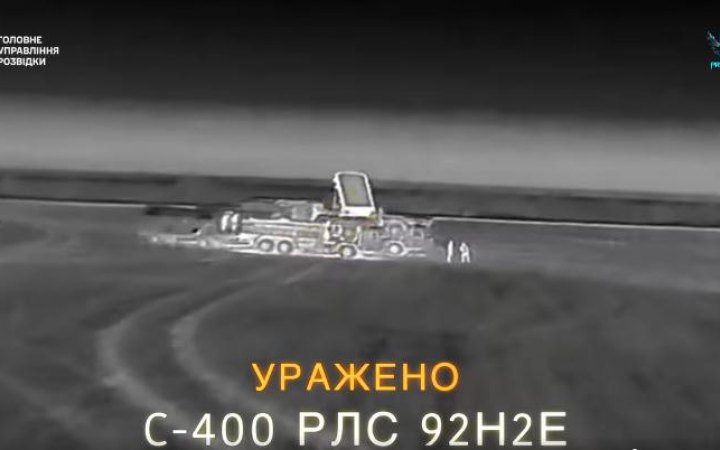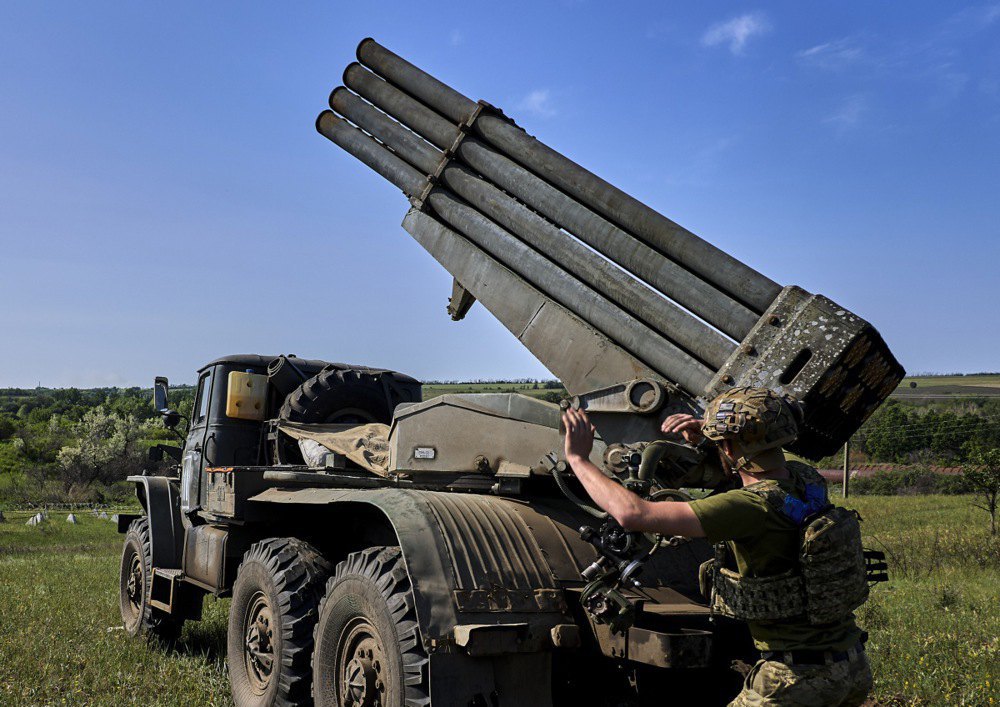
The situation is clear. First, we have once again reached the S-400 in Crimea.
The Defence Intelligence of Ukraine knocked out two 92N2E radars, two 91N6E detection radars, and an S-400 Triumph launcher with drones.
In addition to serious financial losses, as a division of four vehicles for Turkey cost $630 million, this primarily means the blinding of air defence in the sector.
And Neptune missiles and OTRK missiles can now bypass the drones – I am confident that we have the necessary countermeasures for such a scenario.
Logistics in Crimea, after the damage to the bridge support and the destruction of ferries last year, is not the strongest point, so for Moscow this is a clear signal – we will continue to target supplies to the peninsula.
This is why the destruction of the large air defence system in Crimea continues.
Because it is convenient for us to work in depth here – we are covered in the Dnipro sector, and despite the fact that the Russians tried to put pressure on the islands, it will not be possible to push back the line here, create problems for our pilots and artillery, and bring small groups to the right bank.
This means that we will be active in the sector – striking supply boats with drones, raiding Crimea with Maguras, and working on air defence, focusing on radar stations. Because if they are disabled, the entire division cannot function.
Secondly, the Russians lost another train in Tokmak. A train consisting of 40 carriages and tankers was hit by drones. This is the third train we have hit recently.
The previous one was carried out on 22 June, when 11 tankers were burned. Before that, on 7 June, a train carrying tanks and military vehicles was destroyed. The Russians are covering the trains with electronic warfare equipment and groups of pumpers, but they are also suffering losses.
Regardless of how we get to the trains – with special drones with reinforced batteries, motherboards, repeaters, fibre optics, or whether they are deployed by DRGs – the fact remains: the Ukrainian Defence Forces have taken control of the railway to Crimea.
Its most vulnerable part is the Fedorivka–Verkhniy Tokmak–Komysh-Zorya section.
It is risky to send large air defence systems here – they will be destroyed by drones and HIMARS.
And manpower with portable weapons is not yet up to the task. Until anti-aircraft drones are mass-produced and UAV fighters are invented, it is impossible to reliably protect the train.
So we will continue to strike them, and the situation with the supply of fuel, ammunition, spare parts and food in the south will worsen for the Russians.
This raises an interesting point: in order to push the line of combat away from the railway branch, the Russians need to attack a well-fortified section along the Kamyanske–Shcherbaky–Orikhiv line.
They may not want to spread their resources thin right now. But the situation demands it – three large trains in less than a month is painful.
Nevertheless, they need to attack the section of the front where several assaults were recently repelled with heavy losses of three dozen pieces of equipment.

And there is not unlimited technology left – they must carefully choose where to strike. Here, it will not be possible to choose – they have to move the line to a specific place where we are waiting for them.
There are minefields, well-coordinated crews of external pilots, and barrels in caponiers that are well protected from UAVs.
Therefore, the front line in Sumy is stable. Andriyivka has been recaptured as a result of a counterattack, the Russian commander was killed there, and there are skirmishes in Yunakivka, with our aviation targeting those who broke through.
Attempts to encircle Kostyantynivka and Pokrovsk are continuing, but there, every landing and every village requires enormous effort, because Russia is facing a well-prepared defence.
Therefore, it is quite likely that one of the targets of the 2025 summer campaign will be the south, in the area from the Dnipro to Orikhiv.
The war for the bottleneck in Crimea – we will increase pressure on ferries, surviving VDK and SDK vessels, air defence batteries, and railway supplies in the sector.
The Russians will try to push away those who hurt them the most – our pilots from their main transport artery today.
In the coming weeks, the Russian military will try to attack our strongholds in the south to ease the pressure on the railway. Or we will continue to knock out trains in the depths. Both options are more advantageous for us, but the Russia must respond.







